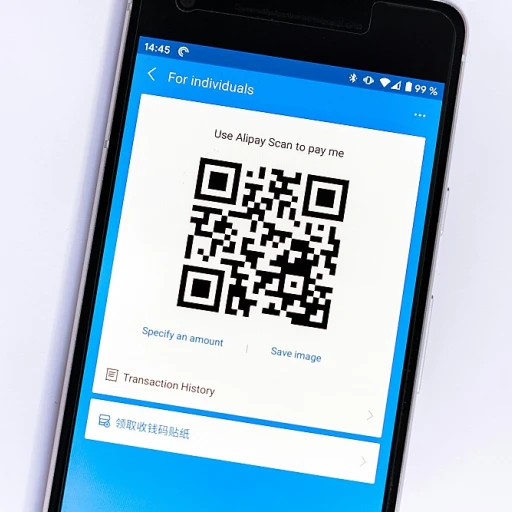Understanding GP-Led Transactions
Deciphering the Dynamics of GP-Led Transactions
GP-led transactions are reshaping the investment landscape, often characterized by their complexity and strategic significance. With Understanding the Asset Under Management Dynamics, one can appreciate the intricate mechanics involved in these deals, particularly for companies like LGT Capital Partners that thrive on cutting edge strategies. These transactions are a variation of the traditional secondary market deals and are initiated by the General Partner (GP) to provide liquidity options, manage assets, or reorganize funds. This nuanced approach allows GPs to address existing portfolio concerns while capitalizing on new opportunities. For those in the investment community, it’s crucial to comprehend how GP-led deals function:- Liquidity and Asset Management: These transactions can offer GPs greater control over asset management, allowing them to extend the holding period or alter investment strategies without overtly affecting the primary investor pool.
- Market Dynamics Influence: The rise in popularity of GP-led deals is partly driven by current market conditions. Investors and service providers are increasingly looking for innovative solutions to navigate economic unpredictability, making this an interesting read for those keeping an eye on market trends.
Strategic Implications for LGT Capital Partners
Strategic Positioning in the Evolving Secondaries Market
In today's rapidly shifting market, LGT Capital Partners' foray into GP-led transactions illustrates a keen awareness of what it takes to maintain a competitive edge. This involves not only keeping up with market trends but understanding the intricate dynamics shaping these deals. As the market continues to evolve, GP-led secondaries have emerged as a pivotal approach, providing general partners an opportunity to restructure existing funds while offering liquidity to investors. The strategic importance of these transactions cannot be overstated as they enable players like LGT Capital Partners to proactively manage portfolio risk and capitalize on rising demand in the secondary market. Aligning service providers in this process is crucial for ensuring high-quality execution. The collaboration of cutting-edge apps market technology with financial expertise allows for a seamless transaction experience, saving valuable time and resources. As the demand for these deals grows, the time best spent is on fine-tuning strategies that address complex transactional needs. LGT Capital Partners must also ensure their approach is aligned with market expectations and trends. The focus on quality content in structuring these deals speaks to a broader strategy of maintaining credibility and trustworthiness, vital in securing stakeholder buy-in. The ability to call upon expert insights and maintain an excellent website that offers critical information further enhances the group's strategic advantage. For a more detailed exploration of regulatory compliance and strategic maneuvers, you might want to read this comprehensive guide on navigating regulatory complexities: navigating regulatory complexities.Risk Management in Secondaries Deals
Managing Risks in the Secondary Market
Understanding the intricacies of risk management in GP-led secondaries deals is crucial for institutions like LGT Capital Partners. The complexities of these transactions call for a strategic approach, particularly in an ever-evolving market. A comprehensive risk management framework is pivotal and centers on due diligence, accurate market insights, and swift decision-making. Careful assessment of opportunities allows LGT Capital Partners to navigate the market with confidence. The quality content offered by excellent websites can provide insights into the potential risks associated with these deals. This strategic foresight helps maintain a high level of service and product offerings. Several factors contribute to market risk, such as shifts in global economic indicators or regulatory changes, which can be unpredictable. Staying ahead of these changes requires a blend of traditional strategies and cutting-edge technology applications. Engaging with service providers and leveraging their expertise can mitigate some of these risks. Time management is also a crucial element, as the intricate nature of GP-led deals demands comprehensive evaluation within tight deadlines. Effective communication channels, such as video calls, are instrumental in bridging information gaps between stakeholders, ensuring that decision-makers are equipped with accurate data to make informed choices. Addressing these challenges effectively requires a dedicated team that can respond to uncertainties swiftly. Strengthening internal frameworks and enhancing customer support can further reduce potential fallout from investment risks, leading to more seamless executions. As insiders in the secondary market have noted, a successful risk strategy is rooted in a blend of experience and innovation. Ultimately, these mechanisms not only safeguard investments but also enable LGT Capital Partners to harness market trends effectively. For those looking to dive deeper into strategic risk management practices, consider exploring how venture capital fuels startup growth here.Market Trends Influencing Secondaries Deals
Evaluating Current Influences Shaping the Secondary Market
Navigating the complexities of LGT Capital Partners' GP-led secondaries requires a keen understanding of market trends. The secondary market is being shaped by various factors that impact not only the time frames of deals but also the valuations and strategies employed by stakeholders. One significant trend is the increasing use of digital platforms and apps in conducting transactions. The apps market has grown, leading to easier access to market data and enabling better communication between service providers and investors. This shift has led to quicker deal completions, as information can be disseminated more efficiently than ever before. Another notable influence is regulatory changes, which have recently been the subject of intense discussion. For instance, policy changes and directives under initiatives like those from U.S. administrations, including President Biden’s, have the potential to impact structuring and approval timelines. Hence, staying informed via high quality sources or dedicated websites is paramount for those involved in these deals, as market actors are often required to address new compliance mandates within office hours on short notice. Macro-economic factors also play a significant role. Economic recovery patterns from the COVID-19 pandemic have had a direct impact on the liquidity and providers’ willingness to engage in secondaries. As economies reboot globally, interest rates and inflation forecasts continue to influence investors' strategies and timing of buy or sell decisions. As a result, keeping a pulse on economic forecasts is vital, as market players look for good time opportunities to invest or divest. Finally, with people continuously searching for ways to optimize returns, GP-led transactions have become more appealing when compared to other asset classes. The pursuit of cutting edge financial tools and processes makes due diligence and information sourcing more important than ever, ensuring high quality insight into market conditions. Those interested in deepening their understanding should explore content from key market analyses to maintain excellent anticipation of future trends in this evolving space. In conclusion, the interplay of digital innovation, regulatory landscape shifts, and economic conditions contribute to the complex tapestry that is the secondaries market. Understanding these dynamics will leave LGT Capital Partners well-prepared in navigating their GP-led transactions strategically and efficiently.The Role of Due Diligence
The Critical Nature of Thorough Investigation
In the realm of GP-led secondaries deals, due diligence stands as a cornerstone for success. This process is crucial in identifying potential pitfalls and ensuring that investments align with strategic goals. A comprehensive due diligence process involves evaluating the financial health, operational capabilities, and market position of the entities involved. This meticulous approach helps in mitigating risks, which is essential in the fast-paced world of secondaries transactions.
With the market dynamics constantly evolving, service providers must ensure they are equipped with cutting-edge tools to perform high-quality analyses. This includes leveraging data analytics and market research to forecast potential outcomes. The time spent in this phase can significantly impact the overall success of a deal, making it a good time investment for any firm looking to solidify its position in the market.
Engaging with Service Providers
Working with experienced service providers is another aspect of due diligence that cannot be overlooked. These experts offer valuable insights and support, ensuring that all aspects of a deal are thoroughly vetted. Their role is not just about crunching numbers; they provide strategic advice that can be a game-changer in complex transactions.
For firms like LGT Capital Partners, having access to excellent website resources and apps market tools can streamline the due diligence process. These digital platforms allow for a more efficient workflow, reducing the time spent on data gathering and analysis. In turn, this enables teams to focus on strategic decision-making and customer support, ensuring that every deal is completed with precision.
Ensuring a High-Quality Outcome
The goal of due diligence is to ensure a high-quality outcome that aligns with the firm's strategic vision. By addressing potential risks early, firms can navigate the complexities of GP-led transactions with confidence. This process is not just about identifying red flags; it's about creating a roadmap for success that can withstand market fluctuations and deliver long-term value.
In conclusion, the role of due diligence in GP-led secondaries deals is multifaceted and requires a strategic approach. By investing in quality content, engaging with service providers, and utilizing cutting-edge tools, firms can ensure they are well-prepared to tackle the challenges of the market. This approach not only safeguards investments but also positions firms for future growth in an ever-changing landscape.
Future Outlook for GP-Led Transactions
Predicting the Trajectory of GP-Led Transactions
As we look toward the future of GP-led transactions, it's crucial to consider several factors that will shape their progression. The time is ripe for market participants to focus on strategic enhancements that align with emerging trends and anticipated changes.- Regulatory Developments: With the rapidly evolving regulatory landscape, keeping up with changes in policies and directives is paramount. It is advisable for organizations to maintain regular contacts with legal experts to stay informed and prepared.
- Technological Advancements: The integration of cutting-edge technology remains a pivotal force in transforming GP-led deals. The emergence of innovative apps in the market is making it easier for stakeholders to manage transactions with greater efficiency and accuracy.
- Investor Appetite: Increasing interest from investors looking for alternative avenues for capital allocation suggests a buoyant future for GP-led secondaries. This is likely to sustain the momentum in demand for high-quality assets.
- Strategic Partnerships: Identifying and collaborating with reputable service providers is integral to maintaining credibility and delivering quality content. Reliability and trust in such alliances can not only elevate transaction outcomes but also enhance investor confidence.













